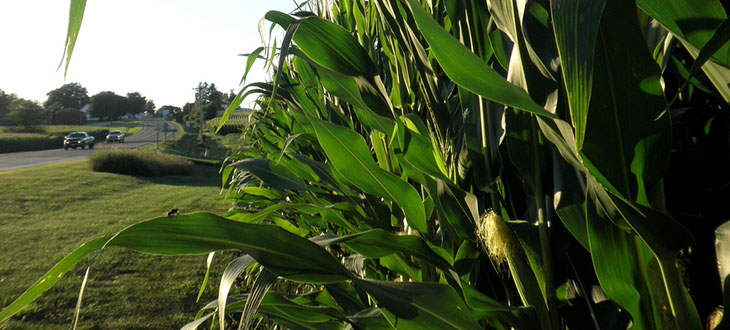Corn Cobs Could Power Cars

(Inside Science) -- Today, ethanol is routinely made from the kernels of corn. Eventually, though, it may be made from the husks.
Starches like corn provide quick energy because they readily break down into simple sugars such as glucose. This structure also makes them easy to convert into bioethanol, an alternative to fossil fuels.
But there are problems with relying on the same plants to fuel both our bodies and our cars: we only have so much land and water available to grow them. Repurposing cropland to produce ethanol reduces our potential food supply.
That's why some biofuel researchers are trying to glean energy from plants with less nutritional value, such as switchgrass and wheat straw. These tough plants are rich in cellulose -- a large molecule that can be converted to glucose -- and lignin, which cannot directly yield the sugar.
A team of researchers from the National Bioenergy Center is tackling a central challenge faced by this emerging industry: how to convert the leftover lignin into something useful. Their results, published last month in the journal Proceedings of the National Academy of Sciences, could help make large-scale cellulose-based biofuel production economically viable.
While both cellulose and lignin provide structure to plant cell walls, the carbon, hydrogen, and oxygen atoms that make up both molecules are linked together in different ways. Cellulose, like starch, is made up of a long chain of glucose molecules bonded together. Although the bonds in cellulose are stronger than those linking glucose molecules in starches, they can be broken under the right conditions to produce usable energy.
Lignin, in contrast, has a highly irregular structure. It is energy-dense and abundant, making up 15 to 30 percent of plant biomass, but breaks down into an unstable soup of molecules that is difficult to convert into anything usable.
"Lignin has a lot of potential, but for many decades, it's been the bane of biofuel developers," said Colorado-based Gregg Beckham, a chemical engineer at the National Bioenergy Center.
To address lignin's challenges, the researchers found inspiration in nature: Some bacteria use a mixture of enzymes to help convert a wide array of different molecules into just one or two usable types.
Beckham and his colleagues started with corn stover, the tough leaves and stalks of corn that are usually disposed of after the harvest, and broke down its lignin into a liquid mixture of many different smaller molecules.
They then fed that mixture to Pseudomonas putida, a species of soil bacteria. The bacteria helped convert the smorgasbord of small molecules into PHAs, a group of biodegradable plastics.
While PHAs are useful on their own, the researchers further processed them to form hydrocarbon chains that could be converted into fuels, suggesting that lignin could be harnessed as an energy source in its own right.
"Pseudomonas putida was among the first microbial species used to biodegrade crude oil spills, and is now interestingly finding synergistic applications in the cellulosic biofuel industry," said Shishir Chundawat, a Michigan-based chemical engineer at the Great Lakes Bioenergy Research Center who was not involved in the research.
Cellulose-based biomass is an abundant and largely untapped source of energy. According to Beckham, there are just a handful of cellulose-based bioethanol production plants around the world. Because many cellulose-rich fuel sources are byproducts of other industries -- wood pulp from paper production or corn stalks from agriculture -- they are usually discarded as waste in the current system, and using them to produce fuel would not require additional land or water resources. However, the industry is currently limited in its ability to use lignin, and each production facility creates tons of lignin-derived waste each day.
"If you look at the petrochemical industry, they bring in crude oil and they're able to squeeze value out of every molecule that comes in," said Beckham. "This experiment is one step in the right direction towards lignin valorization, getting value from it instead of burning it."
Beckham emphasized that the bacteria-driven process is far from being industry-ready, and that this research is just one example of how to harness bacteria to make use of lignin. He hopes that this research will drive future experimentation to optimize and better understand the process, modifying the plant species and strains of bacteria used.
"There are so many options in terms of how you can get lignin and [break it down], there are so many organisms out there that you can modify, and there are so many knobs you can turn," he said.
Laurel Hamers (@Arboreal_Laurel) is a science writer based in Madison, Wisconsin.
